I know both personally & professionally how difficult reactivity can be for both the dog AND the guardian. My own rescue dog was EXTREMELY leash reactive, and reactivity is also the vast majority of my private client work.
I want to share 3 mindset shifts to hopefully make reactivity training less stressful for both you & your dog!
(Note: These 3 tips are from my Youtube video “6 Things You NEED to Know for Reactivity Training“. I’ll just be covering the 3 mindset shifts in this blog post, but if you want to check out the 3 practical training tips as well watch the video!)
1) Reactivity progress won’t be linear
When most people first start training reactivity, they think that their progress is going to look like this:
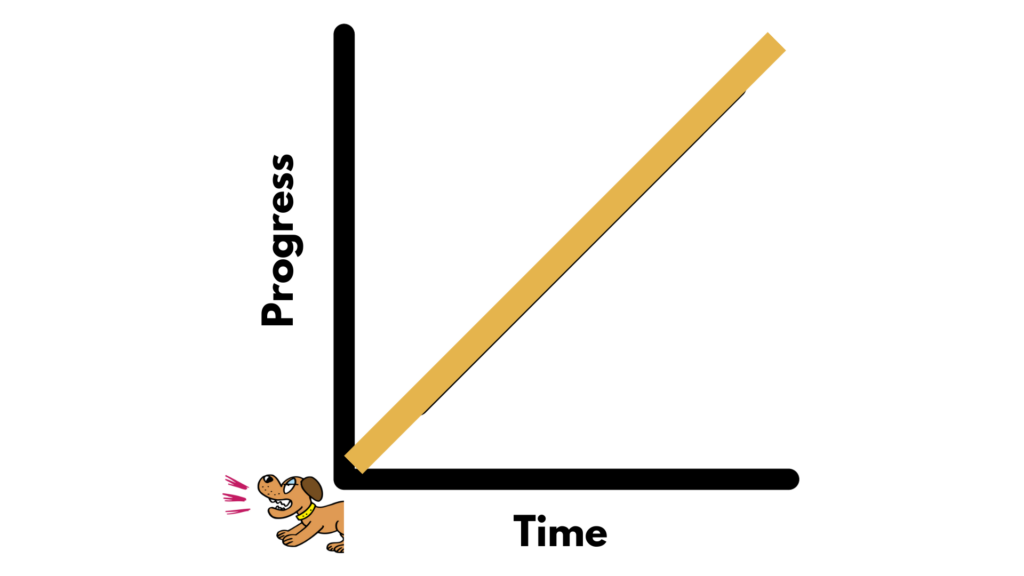
People assume that with each session, progress will increase and it’ll be a pretty smooth trend towards an un-reactive dog.
I can almost promise you that your progress is NOT going to look like that!
Instead, it’s going to look something like this:
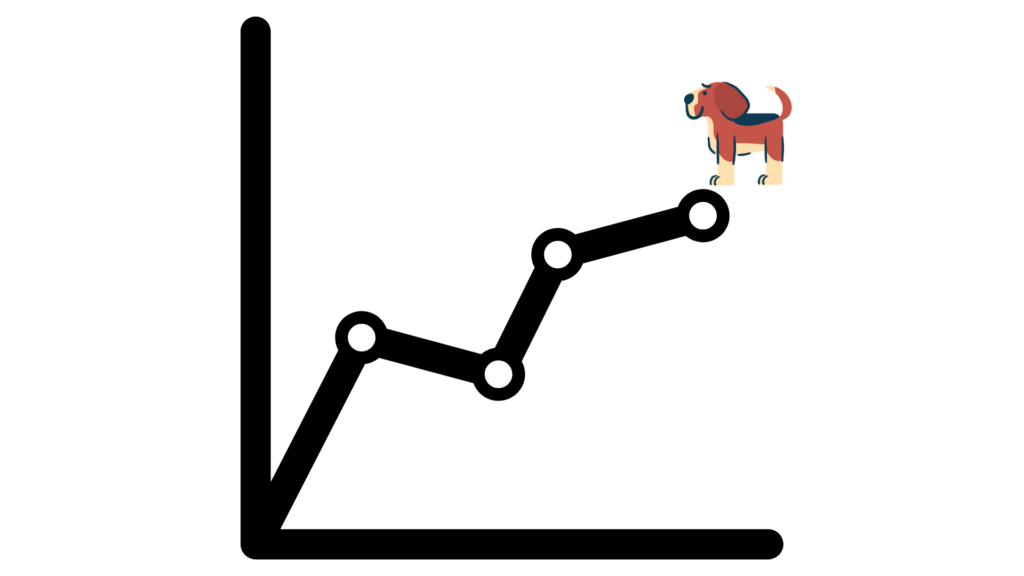
You will have great moments where you’re seeing progress then life will throw you a curveball, your dog will have a huge reaction, and you’ll question if any of this is working.
I want to reassure you that this is normal, even for professional dog trainers!
I’ve been filming a series with Louie for my Youtube channel where we work on his leash reactivity, prey drive, pulling on leash, and jumping (first video in series linked below)
During my first two weeks with Louie, it felt like I was making steady progress with him. His reactivity to men and small animals was going great, and he was slowly getting better with dogs at a distance too.
Then during one of our walks we were rushed by an off-leash dog in an on-leash area. I handled it as best as I could by scattering treats to occupy the dog while we left, but I could tell that it rattled Louie who already had fear-based reactivity.
The next time that he saw a dog he was the most reactive that he had been in three weeks. 🙁
It would have been really easy to feel dejected by all of that, but instead I want to show you that graph again:

There WILL be bad moments that come up, but I want you to focus on the overall trend. Progress won’t be linear, but that doesn’t mean that there hasn’t been progress.
It should be expected that when you’re training in the real world, there’s going to be lousy days. I want you to remember though where you started and how far you’ve come.
Jagged lines can still get you where you want to go!
2) Corrections aren’t necessary to “fix” reactivity
Most of the advice that you’ll see online will encourage you to punish & correct your dog for their reactivity. They’ll suggest putting your dog into a stressful situation that they aren’t capable of handling just so you can correct them with leash pops, choke chains, shock collars, or prong collars.
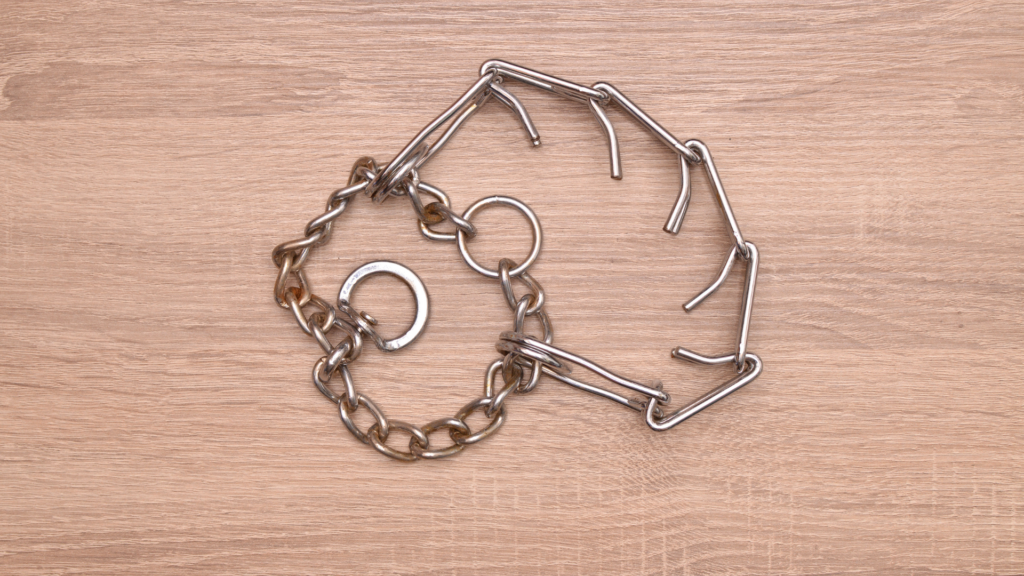
I suggest you to do the complete opposite.
We need to move away from this false notion that our dogs are “being bad” when they’re reactive. They’re not.
Quite commonly reactivity is a fear-based response. Dogs can’t tell us with words that they’re struggling, so they announce it in the only way they can. Reactivity is simply a dog’s way of indicating that they can’t handle the level of stimulus presented.
Remember: Corrections AREN’T required to address reactivity.
In fact, most of the time they’re just going to make it worse.
I’ve worked with many reactive dogs and I haven’t used corrections on any of them to achieve results. This doesn’t make me special, it simply means that I’m properly utilizing learning theory in a humane way and that you can too!
The reason all professional organizations recommend avoiding positive punishment for reactivity is that 1) it’s unnecessary and 2) it also has the potential of leading to fallout such as increased aggression.
Rather than pushing our dogs over threshold and punishing them when they struggle, why don’t we instead teach them how to handle that stimulus at a level that they can tolerate & then progressively increase it?
We can utilize reinforcement such as dog treats to build positive associations & reward desirable behaviours (such as calmness) around our dogs triggers.
You may feel enticed by these so-called “miraculous” one-day transformations that you see online that use heavy corrections, but I want you to think about this from a different perspective:
What level of stress, pain, or discomfort would be required to make YOU stop reacting to your fears?

If you were punished THAT severely, would your fear truly be fixed or would your displays of fear just temporarily be suppressed?
Heavy punishment doesn’t solve the real issue behind our dog’s behaviour, it just suppresses it.
Our dogs don’t deserve punishment for having struggles. Reactivity when properly addressed isn’t just a light switch that you turn on and off. You might be able to punish your dog severely enough that they stop reacting, but at what cost? You won’t just be turning off the outward reactivity; you’ll be turning off the inner light in your dog and shaping how they see the world.
Your dog deserves compassion and kindness when they’re struggling, not corrections.
3) Feelings are NORMAL when working on dog reactivity
There’s a popular saying that goes:
“Your dog isn’t giving you a hard time, they’re having a hard time”
It’s important to keep in mind that reactivity isn’t something that your dog is doing TO you; it’s something that THEY’RE experiencing and struggling with.
I’m really glad to see an increased level of reminders about being compassionate to our dogs, but I also think sometimes the human gets lost in that.
If your dog does get triggered and reacts, it’s completely normal for that to bring up huge feelings in you.
Embarrassment. Frustration. Sadness. Even anger!
These are all completely normal feelings to be having.
As adults it is our responsibility to act in a certain way despite having huge feelings, but I don’t want you to feel guilty for having them in the first place. It’s really important that we give ourselves compassion too.
Reactivity is hard on both the dog AND the human.
It’s completely normal & okay if you struggle sometimes too.
Please remember that!
I hope these three mindset shifts encourage kindness to both you & your dog during your reactivity training journey. If you want to watch this in video form & also see 3 practical training tips, watch this:
Happy training 🙂
Disclosure: Happy Hounds uses affiliate links. Purchasing with these links will not cost you any extra, but I get commissions for purchases made through these links. Affiliate links help me to continue to offer free resources & blog posts. I would love if you used them!
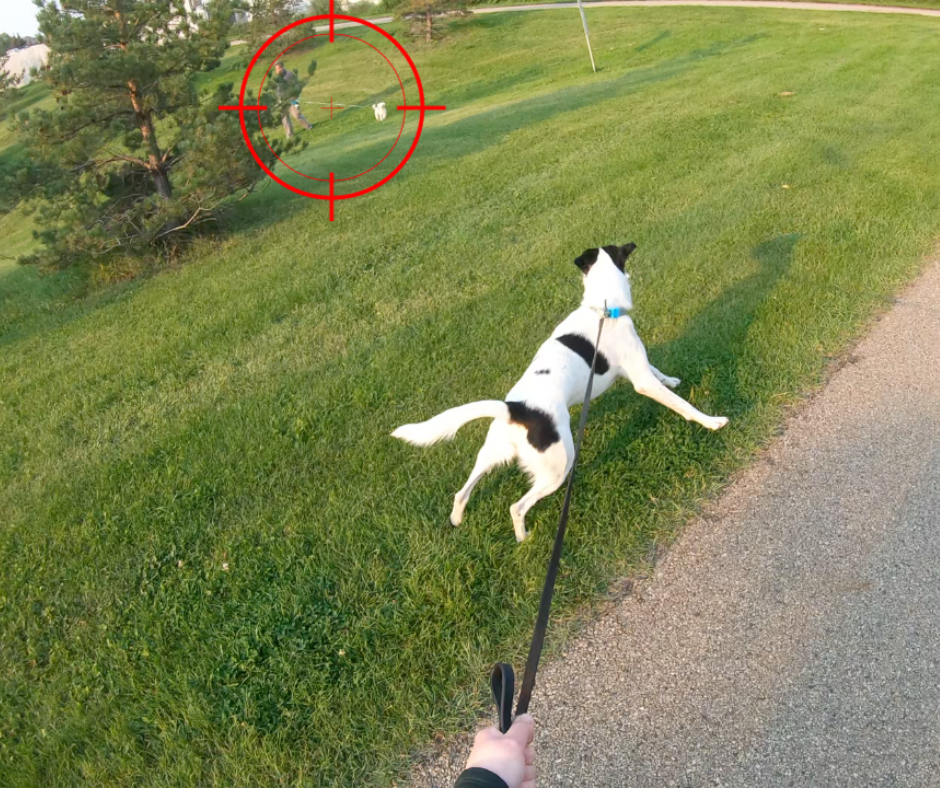
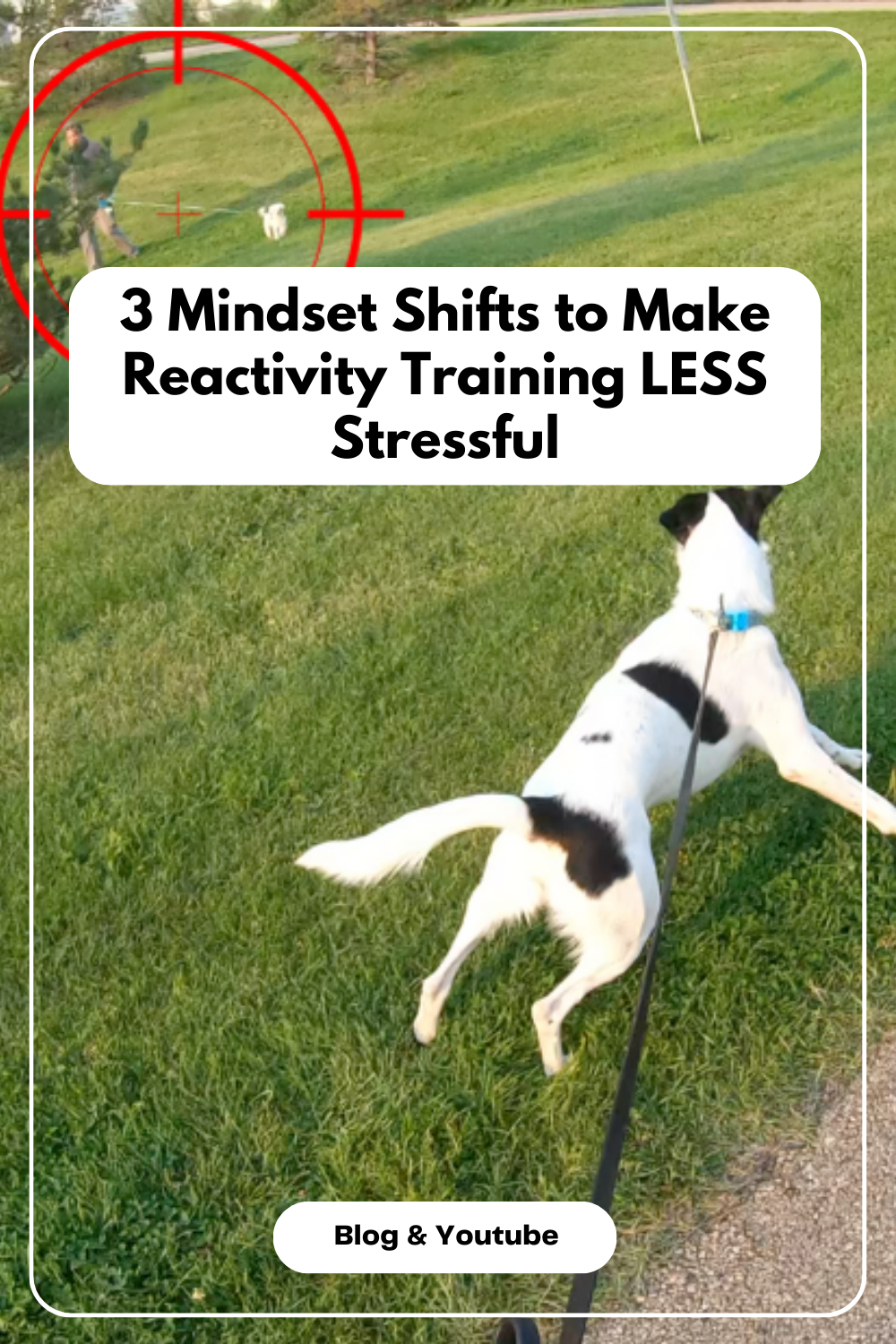
+ show Comments
- Hide Comments
add a comment